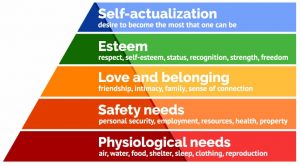Employee dissatisfaction may be one of the greatest threat to the American workplace today. When employees are no longer happy they develop behaviors that are often harmful to the organization, therefore impeding productivity and profit. This blog aims to explore the steps that are essential for organization leaders to acquire and maintain its most valuable resources, its employees. According to Richardson (2014), workers’ engagement plays a significant role in an organization ability to set its culture and keep their employees happy.
Workers who are actively engaged with the organization and have bought into the positive culture and climate have lower levels of stress of low stress. These employees have a higher rate of satisfaction in their personal and work life. An added be benefit to the organization is that these employees take less sick and personal days.
Studies have shown that these same employees stay with the organization for an extended period compared to the rest of the workers who are less engaged. For instance, in the recent decades in the USA, employees with dissatisfaction, research by Oludayo et al. (2018), have cost the US enterprises a loss of $300 billion a year through productivity.
Francine Williams Richardson of Walden University set out with his case study to discover what strategies where critical for business leaders to focus on that would impact the performance in the workplace. Francine Williams Richardson used Maslow’s hierarchy of needs as an outline for his research. After the data was collected through interviews of managers of the information was reviewed to find patterns and themes between those interviewed. From Francine
Williams Richardson case study five themes arose:
- Workplace Environment: Richardson stated that mangers needed to focus “on the level of flexibility given to employees in the organization.”
- Feedback Sources in Organizations: Richardson stated that mangers needed to provide employees with “measurable standards such as written evaluations and other resources provided to employees.”
- Management Relationships: Richardson stated that mangers needed to focus on “managers’ influence on the performance of employees.”
- Barriers in The Workplace: Richardson defined this as “examining internal and external sources that impede performance.”
- Recruitment & Promotion Strategies: Richardson defined this as “centering on the organization’s compensation incentives.”
References
Richardson, F. W. (2014). Enhancing strategies to improve workplace performance.
Oludayo, O. A., Akanbi, C. O., Obot, B. M., Popoola, S. I., & Atayero, A. A. (2018). Influence of talent retention strategy on employees׳ attitude to work: Analysis of survey data. Data in brief, 20, 698-705.
